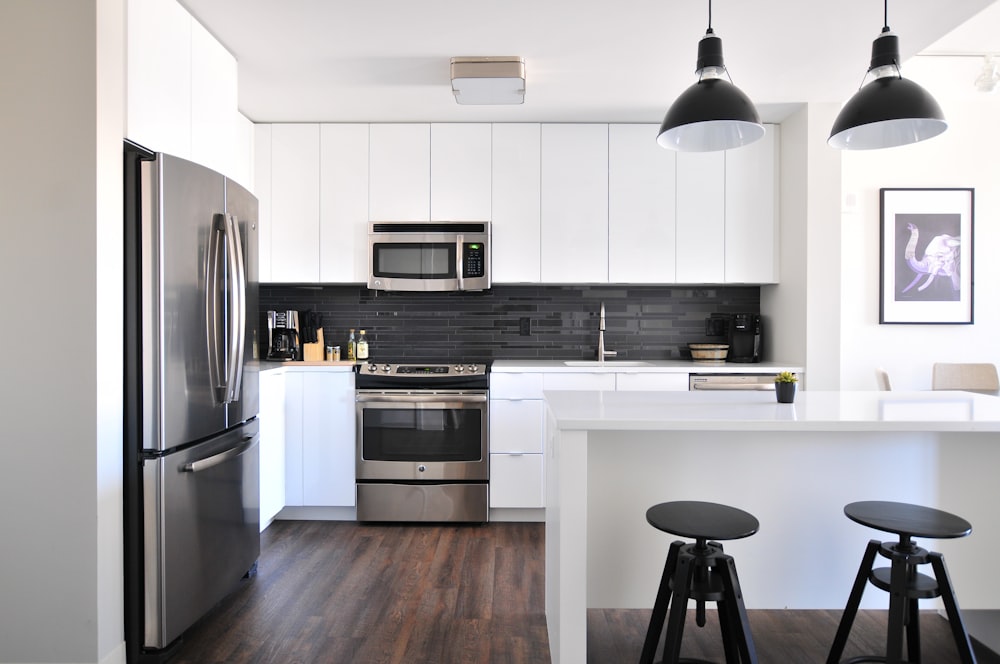water damage
Fixing a Persistent Kitchen Sink Leak Expert Solutions
Identifying the Culprit: Understanding Your Leaky Kitchen Sink
When it comes to household nuisances, few things are as aggravating as a leaky kitchen sink. The constant drip-drip-drip can drive even the most patient person to the brink of insanity. But fear not, for there are solutions to this common problem that don’t involve calling in a pricey plumber. Let’s delve into the heart of the matter and explore how to put an end to that persistent leak once and for all.
Assessing the Damage: Determining the Source of the Leak
The first step in addressing a leaky kitchen sink is to identify where exactly the leak is coming from. Is it emanating from the faucet itself, or is the issue lurking deeper within the pipes? Take a moment to carefully inspect the area under your sink for any visible signs of moisture or dripping water. This will provide valuable clues as to the origin of the leak and help you formulate a plan of action.
Tackling Faucet Leaks: Simple Solutions for a Common Problem
If the leak seems to be originating from the faucet, don’t panic. Oftentimes, this type of leak can be remedied with a few basic tools and a little know-how. Start by turning off the water supply to the faucet and then disassembling the fixture to inspect the various components for wear and tear. In many cases, a worn-out washer or O-ring is to blame for the leak and can be easily replaced with a trip to your local hardware store.
Addressing Pipe Leaks: Dealing with a More Complex Issue
If the leak appears to be stemming from the pipes beneath your sink, you may be dealing with a more complex problem that requires a bit more finesse to fix. Begin by tightening any loose fittings or connections and inspecting the pipes for signs of corrosion or damage. If you spot any cracks or holes, you’ll need to replace the affected section of pipe using a pipe cutter and some replacement piping.
DIY vs. Professional Help: Knowing When to Call in the Experts
While many kitchen sink leaks can be successfully remedied with some DIY know-how, there are instances where it’s best to leave the job to the professionals. If you’re uncomfortable working with plumbing or if the leak is particularly severe, don’t hesitate to reach out to a licensed plumber for assistance. While it may cost you a bit more upfront, hiring a professional can save you time, frustration, and potentially costly repairs down the line.
Preventative Measures: Avoiding Future Leaks
Once you’ve successfully addressed the leak in your kitchen sink, it’s important to take steps to prevent future leaks from occurring. Regularly inspect the area under your sink for any signs of moisture or damage, and promptly address any issues you encounter. Additionally, consider investing in a leak detection system or adding a drip tray beneath your sink to catch any minor leaks before they have a chance to cause significant damage.
Conclusion: Putting an
Professional Techniques for Copper Pipe Leak Repair
Effective Solutions for Copper Pipe Leak Repair
When faced with a copper pipe leak, homeowners often find themselves in a stressful situation. However, with the right knowledge and tools, resolving this issue can be manageable. In this article, we’ll explore effective solutions for repairing copper pipe leaks, providing step-by-step guidance and expert tips to help you tackle this task with confidence.
Identifying the Leak
Before diving into the repair process, it’s crucial to identify the location of the leak. Start by inspecting the affected area for any signs of water damage or moisture. Look for damp spots, water stains, or puddles around the pipes. Additionally, listen for the sound of dripping water, which can help pinpoint the source of the leak. Once you’ve located the leak, mark the area for easier reference during the repair process.
Gathering the Necessary Tools and Materials
To effectively repair a copper pipe leak, you’ll need the right tools and materials on hand. This includes pipe cutters, emery cloth or sandpaper, flux, solder, a propane torch, and safety equipment such as gloves and goggles. Before starting the repair, ensure that you have everything you need readily available to streamline the process.
Preparing the Pipe
Before making any repairs, it’s essential to properly prepare the damaged section of the copper pipe. Start by shutting off the water supply to the affected area to prevent further leakage. Next, use a pipe cutter to remove the damaged portion of the pipe, ensuring that the cut is clean and straight. Once the damaged section has been removed, use emery cloth or sandpaper to clean the ends of the remaining pipe to ensure a secure connection.
Applying Flux and Solder
With the pipe prepared, it’s time to apply flux to the cleaned ends. Flux helps facilitate the soldering process by promoting the adhesion of the solder to the copper surface. Apply a thin layer of flux to both the inside of the fitting and the outside of the pipe ends. Next, carefully insert the pipe into the fitting, ensuring a snug fit. Once in place, use a propane torch to heat the joint evenly. Once the flux begins to bubble and the copper reaches the appropriate temperature, apply solder to the joint, allowing it to flow evenly around the connection.
Testing for Leaks
After completing the soldering process, it’s important to test the repaired joint for any potential leaks. Slowly turn the water supply back on and observe the repaired area for any signs of dripping or moisture. Additionally, run water through the pipes for a few minutes to ensure that the repair holds up under pressure. If any leaks are detected, revisit the soldering process to reinforce the connection as needed.
Preventive Measures
To minimize the risk of future copper pipe leaks, consider implementing preventive measures in your plumbing system. This includes regular inspections of your pipes for signs of corrosion or damage, as well as addressing any issues promptly to prevent them from escalating. Additionally, consider insulating your
Understanding and Repairing Kitchen Sink Leaks Below
Addressing Underneath Kitchen Sink Leaks
Understanding the Issue:
Underneath kitchen sink leaks can be a real nuisance, causing damage to cabinets, flooring, and potentially leading to mold growth if left unattended. Understanding the root cause of the leak is the first step in addressing the problem effectively.
Identifying Common Causes:
There are several common reasons why leaks occur underneath kitchen sinks. These include loose connections, worn-out seals, corrosion, and even cracks in the sink basin itself. Taking the time to identify the specific cause of the leak will help in determining the best course of action for repair.
Inspecting Connections and Seals:
One of the primary areas to check when dealing with underneath sink leaks is the connections to the faucet, drain, and garbage disposal if present. Over time, these connections can become loose or damaged, leading to water seepage. Inspecting and tightening these connections, as well as replacing any worn-out seals, can often resolve the issue.
Checking for Corrosion:
Corrosion is another common culprit when it comes to underneath sink leaks, especially in older plumbing systems. Over time, metal pipes and fittings can corrode, leading to cracks and leaks. Carefully inspecting the pipes and fittings for signs of corrosion and replacing any damaged components can help prevent further leakage.
Repairing Minor Cracks:
In some cases, minor cracks may develop in the sink basin or pipes, leading to leaks. These cracks can often be repaired using epoxy putty or plumber’s tape. However, it’s essential to ensure that the area is thoroughly cleaned and dried before attempting any repairs to ensure a proper seal.
Replacing Damaged Components:
If the leak persists despite your best efforts to repair it, it may be necessary to replace damaged components entirely. This could include replacing worn-out seals, corroded pipes, or even the entire sink basin if it’s beyond repair. While this may require more time and effort, it’s essential for preventing further damage and ensuring long-term stability.
Preventing Future Leaks:
Once you’ve addressed the immediate issue of the underneath sink leak, it’s crucial to take steps to prevent future leaks from occurring. This includes regular inspections and maintenance, avoiding putting excessive weight on the sink, and promptly addressing any plumbing issues as they arise.
Seeking Professional Help:
If you’re unsure about how to address the underneath sink leak or if the problem persists despite your efforts, don’t hesitate to seek professional help. A licensed plumber will have the expertise and equipment necessary to diagnose and repair the issue effectively, saving you time, money, and frustration in the long run.
Conclusion
Remember, dealing with underneath kitchen sink leaks requires patience, attention to detail, and sometimes professional assistance. By understanding the common causes of leaks, inspecting connections and seals regularly, and taking proactive measures to prevent future issues, you can keep your kitchen sink running smoothly for years to come. Read more about kitchen sink leaking underneath



